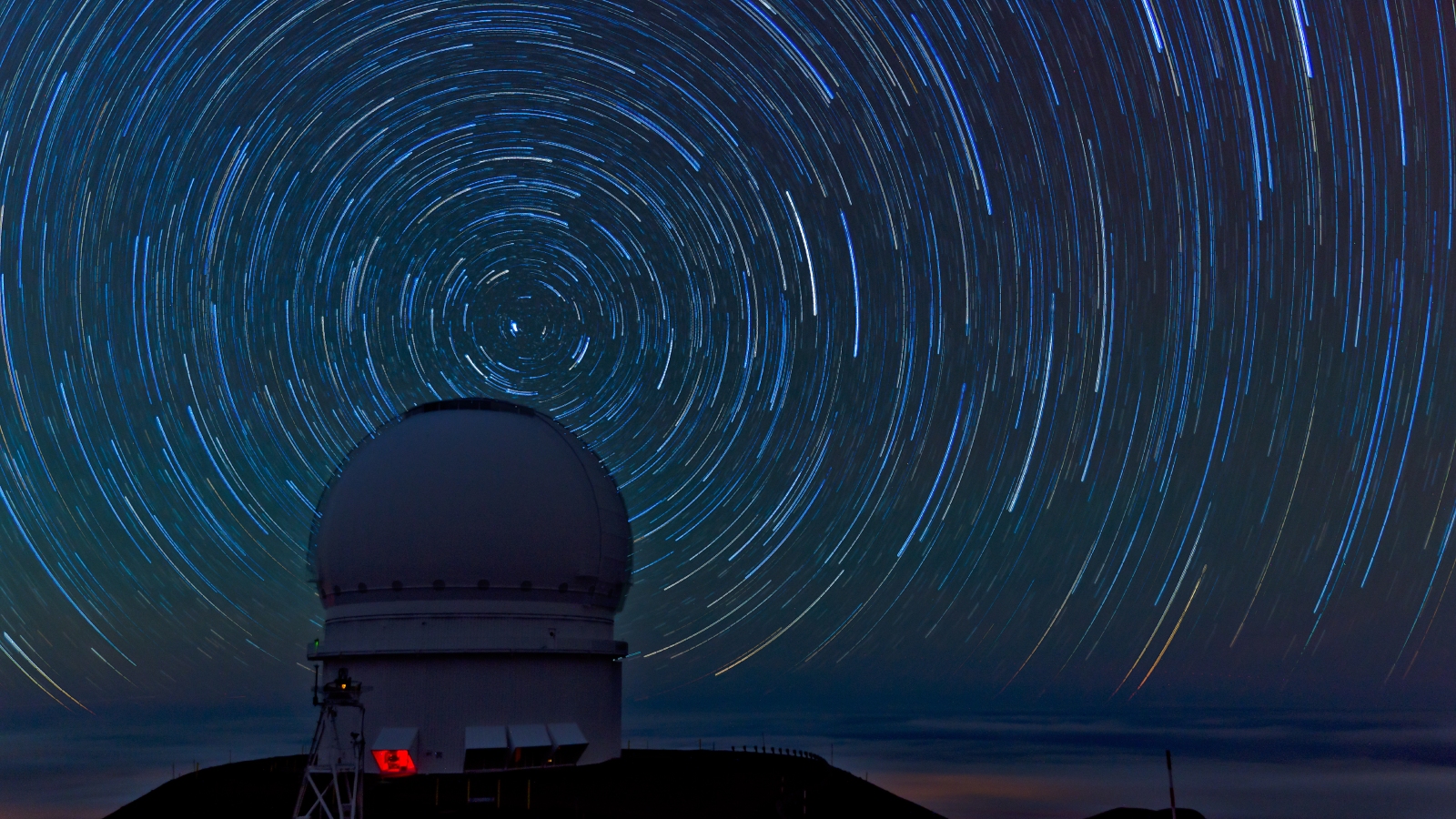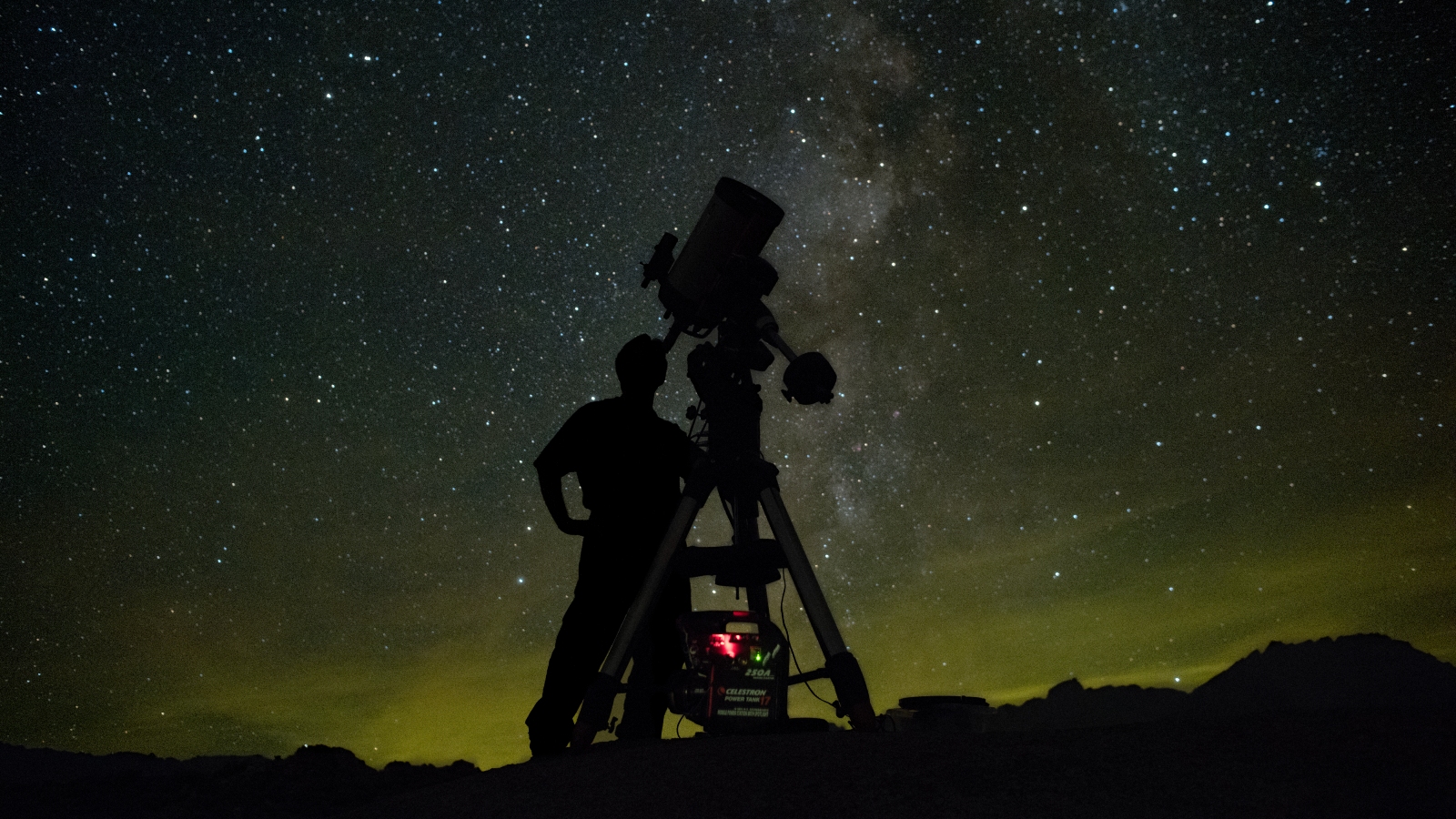
A first-of-its-kind NASA mission aims to put a new "star" in the sky by the end of the decade to help solve a wide range of the universe's biggest mysteries, scientists have announced.
The Landolt NASA Space Mission aims to send an artificial star satellite into orbit around Earth by "early 2029," Peter Plavchan, an astronomer at George Mason University in Virginia and the Landolt mission's principal investigator, told Live Science in an email.
The satellite will be "about the size of a proverbial breadbox" and will be equipped with eight lasers that will enable it to mimic almost any type of star or supernova from across the cosmos when viewed by ground-based telescopes, Plavchan added. This will help astronomers improve how they study the real versions of these objects.
The fake star will be placed exactly 22,236 miles (35,785 kilometers) above Earth's surface, according to a statement by researchers. This will put the satellite in a geosynchronous orbit around our planet, meaning its speed will match Earth's spin so it will appear to be fixed in place in the night sky. For the first year of the mission, researchers plan for this fixed point to be somewhere above the U.S., Plavcham said.
But that doesn't mean everyone will be able to see the new star in the night sky. "It will be more than 100 times too faint to see with the human eye but will be easy to see for moderate-sized telescopes equipped with digital cameras," Plavchan said.
The new mission is named after the late Arlo Landolt, who helped to create extensive stellar brightness catalogs. NASA officially gave the mission a green light in February, Plavchan said, but it was only announced to the public on June 10.
The project will likely have a team of around 30 people and is estimated to cost around $19.5 million, Plavcham said.
Related: Space photo of the week: Astronomers make an 'artificial star' over Hawaii

The main goal of Landolt is to help astronomers calculate the absolute flux calibration of distant stars. This is the measurement of the rate of light particles, or photons, being emitted by stars, which is currently hard to determine accurately. This is partly because atmospheric interference alters the light observed by ground-based telescopes, but also because there are no real reference points for absolute flux calibration, apart from the sun.
Because researchers can control the photon output of their artificial satellite, the fake star will provide a reliable reference point for telescopes to compare against real stars. This should hopefully help astronomers to determine the absolute flux capacity of a star to around 0.25% of its true value, which is around 10 times more accurate than current estimates.
Four ground-based telescopes have been earmarked to focus on the artificial star: George Mason University's 0.8-meter (2.6 feet) telescope, the UH88 telescope at the Mauna Kea Observatories in Hawaii, the Hale Telescope at Palomar Observatory in California and the upcoming Vera C.Rubin Observatory, which is currently under construction in Chile and is due to begin scanning the sky next year.
It is rare for a space mission to involve surface and orbital technologies linking together in this way, Plavcham said. "This is the first modern example of what is considered a hybrid mission that requires the use of facilities both on the ground and in space working together to make measurements."
Researchers believe that being able to measure the brightness and distance of stars more accurately will yield enormous benefits for multiple fields of astronomy. For example, it could help detect more exoplanets around alien stars, while also determining how old a star is and how others like it have evolved over time.
Another major goal of the Landolt mission is to aid researchers in studying dark energy and accurately determining the rate of the universe's expansion, which is currently one of cosmology's biggest problems.







